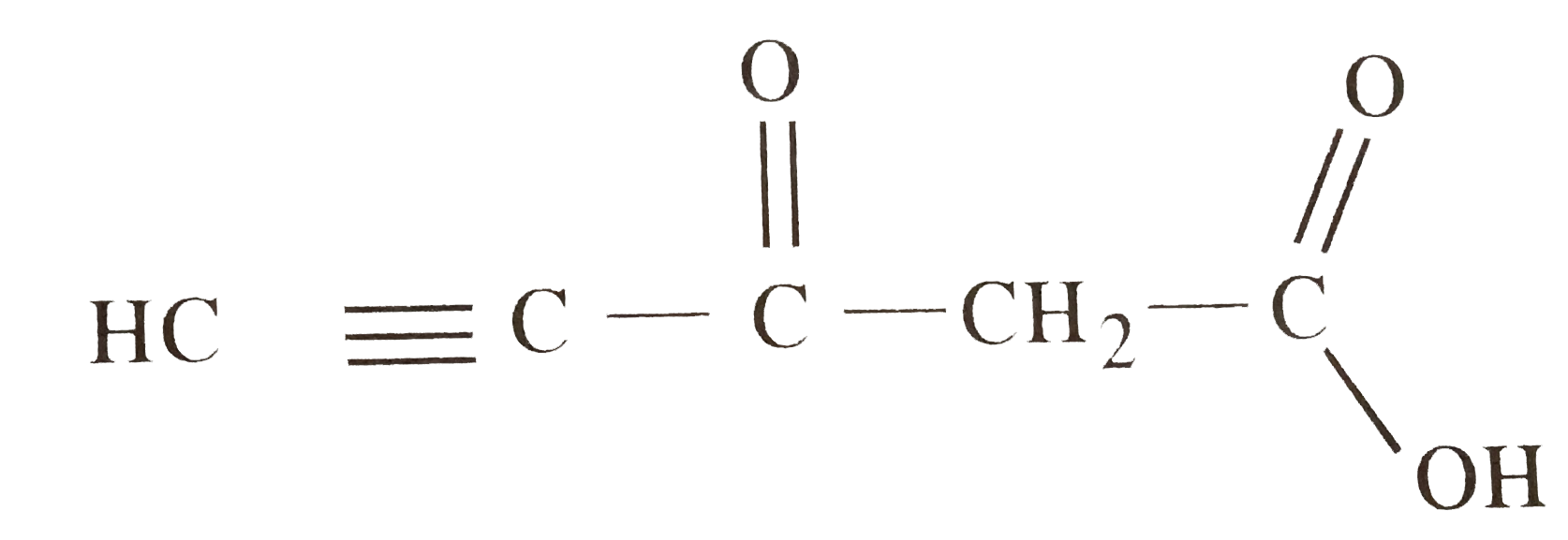Complete Solutions to NCERT EXAMPLAR PROBLEMS (SHORT ANSWER QUESTIONS) of chapter CHEMICAL BONDING AND MOLECULAR STRUCTURE of Class 11 book with complete answers and questions
| Class 11 | CHEMISTRY |
| Chapter | CHEMICAL BONDING AND MOLECULAR STRUCTURE |
| PRADEEP | NCERT EXAMPLAR PROBLEMS (SHORT ANSWER QUESTIONS) |
| Number Of Questions | 21 |
| Academic Year | 2023-24 |
Interpret the non-linear shape of `H_(2)S` molecule and non-planar shape of `PCl_(3)` using valence shell electron pair repulsion (VSEPR) theory.
(Atomic number `:H=1, P=15, S=16, Cl=17`)02:09View SolutionUsing molecular orbital theory, compare the bond energy and magnetic character of `O_(2)^(+)` and `O_(2)^(-)` species.
06:01View SolutionExplain the shape of `BrF_(5^.)`
01:31View SolutionStructrues of moleculars of two compounds are shown on the side .
(a) Which of the two compounds will have intermolecular
hydrogen bonding and which compounds is expected to show
intermolecular hydrogen bonding ?
(b) The melting point of a compound depends on , among other
things, the extent of hydrogen bonding . On this basis explain
Which one of the two compounds will show higher melting point.
(c) Solubility of compounds in water depedns on power to form hydrogen bonds with water. Which
one of the two compounds will form hydrogen bond with water easily and be more soluble in it .
 View Solution
View SolutionWhy does type of overlap given in the following figure not result in bond formation ?
 01:39View Solution
01:39View SolutionExplain why `PCl_(5)` is trigonal bipyramidal whereas `IF_(5)` is square pyramidal ?
01:42View SolutionIn both water and dimethyl ether `(CH_(3)-underset(..)overset(..)O-CH_(3))`, oxygen atoms is central atom, and has the same hybridisation, yet they have different bond angles. Which one has greater bond angle? Give reason.
01:32View SolutionWrite Lewis structure of the following compounds and show format charge on each atom.
`HNO_(3), NO_(2), H_(2)SO_(4)`04:03View SolutionThe energy of `sigma2p_(z)`, molecular orbital is greater than `pi2p_(x)` and `pi2p_(y)` molecular orbitals in nitrogen molecule. Write the complete sequence of energy levels in the increasing order of energy in the molecule. Compare the relative stability and the magnetic behaviour of the following species.
`N_(2), N_(2)^(+), N_(2)^(-), N_(2)^(2+)`03:51View SolutionWhat is the effect of the following processes on the bond order of `N_(2) and O_(2)`?
(a) `N_(2)rarr N_(2)^(+)+e^(-)" "(b) O_(2)rarrO_(2)^(+)+e^(-)`01:50View SolutionGive reasons for the following :
(i) Covalent bonds are directional while ionic bonds are non-directional.
(ii) Water molecule has bent structure whereas carbon dioxide molecule is linear.
(iii) Etyne molecule is linear.03:50View SolutionWhat is an ionic bond ? With two suitable examples, explain the diference between an ionic and a covalent bond ?
02:52View SolutionArrange the following bonds in order of increasing ionic character giving reason.
N-H, F-H, C-H and O-H01:29View SolutionExplain why `CO_(3)^(2-)` ion cannot be represented by a single Lewis structure. How can it be best represented ?
02:39View SolutionPredict the hybridisation of each carbon in the molecule of organic compound given below. Also indicate the total number of sigma and pi bonds in this molecule.
 02:19View Solution
02:19View SolutionGroup the following as linear and non-linear molecules :
`H_(2)O,HOCl,BeCl_(2),Cl_(2)O`02:06View SolutionElements X,Y and Z have 4,5 and 7 valence electrons respectively, (i) Write the molecular formula of the compounds formed by these elements individually with hydrogen (ii) which of these compounds will have the highest dipolw moment ?
02:21View SolutionDraw the resonating structure of
(i) Ozone molecule
(ii) Nitrate ion.03:23View SolutionPresict the shapes of the following molecules on the basis of hybridisation.
`BCl_(3),CH_(4),CO_(2),NH_(3)`02:22View SolutionAll the C-O bonds in carbonate in `(CO_(3)^(2-))` are equal in length. Explain.
01:25View Solutionwhat is meant by the term average bond enthalpy? Why is there difference in bond enthalpy of O-H bond in ethanol `(C_(2)H_(5)OH)` and water?
03:17View Solution
NCERT EXAMPLAR PROBLEMS (SHORT ANSWER QUESTIONS) questions and complete solutions for chapter CHEMICAL BONDING AND MOLECULAR STRUCTURE of PRADEEP CHEMISTRY (HINGLISH) of Class 11
All Exercises from PRADEEP Class 11 CHEMISTRY CHEMICAL BONDING AND MOLECULAR STRUCTURE
- ADDITIONAL QUESTIONS (LONG ANSWER QUESTIONS)
- ADDITIONAL QUESTIONS (SHORT ANSWER QUESTIONS)
- ADDITIONAL QUESTIONS (VERY SHORT ANSWER QUESTIONS )
- ADVANCED PROBLEMS
- ANALYTICAL QUESTIONS AND PROBLEMS WITH ANSWERS/SOLUTIONS
- ANALYTICAL QUESTIONS AND PROBLEMS WITH ANSWERS/SOLUTIONS (PROBLEMS)
- ANALYTICAL QUESTIONS AND PROBLEMS WITH ANSWERS/SOLUTIONS (Questions)
- COMPETITION FOCUS JEE (Main and Advanced)/ MEDICAL ENTRANCE SPECIAL (III. MULTIPLE CHOICE QUESTIONS (Based on the given Passage/Comprehension))
- COMPETITION FOCUS JEE (Main and Advanced)/ MEDICAL ENTRANCE SPECIAL (I. MULTIPLE CHOICE QUESTIONS WITH ONE CORRECT ANSWER))
- COMPETITION FOCUS JEE (Main and Advanced)/ MEDICAL ENTRANCE SPECIAL (II. MULTIPLE CHOICE QUESTINS (WITH ONE OR MORE THAN ONE CORRECT ANSWER))
- COMPETITION FOCUS JEE (Main and Advanced)/ MEDICAL ENTRANCE SPECIAL (IV. MATCHING TYPE QUESTIONS)
- COMPETITION FOCUS JEE (Main and Advanced)/ MEDICAL ENTRANCE SPECIAL (V MATRIX-MATCH TYPE QUESTIONS)
- COMPETITION FOCUS JEE (Main and Advanced)/ MEDICAL ENTRANCE SPECIAL (VI. INTEGER TYPE QUESTIONS)
- COMPETITION FOCUS JEE (Main and Advanced)/ MEDICAL ENTRANCE SPECIAL (VII. NUMERICAL VALUE TYPE QUESTIONS (IN DECIMAL NOTATION))
- COMPETITION FOCUS JEE (Main and Advanced)/ MEDICAL ENTRANCE SPECIAL (VIII. ASSERTION-REASON TYPE QUESTIONS TYPE I)
- CONCEPTUAL QUESTIONS
- Curiosity Questions
- EXAMPLE
- NCERT EXAMPLAR PROBLEMS ( MULTIPLE CHOICE QUESTIONS BASED ON THE GIVEN COMPREHENSION )
- NCERT EXAMPLAR PROBLEMS (ASSERTION AND REASON TYPE QUESTIONS)
- NCERT EXAMPLAR PROBLEMS (LONG ANSWER QUESTIONS)
- NCERT EXAMPLAR PROBLEMS (MATCHING TYPE QUESTIONS)
- NCERT EXAMPLAR PROBLEMS (MULTIPLE CHOICE QUESTIONS -1)
- NCERT EXAMPLAR PROBLEMS (MULTIPLE CHOICE QUESTIONS -I)
- NCERT EXAMPLAR PROBLEMS (MULTIPLE CHOICE QUESTIONS -II)
- NCERT EXAMPLAR PROBLEMS (SHORT ANSWER QUESTIONS)
- NCERT Questions And Exercises With Answers
- PROBLEM
- Problem For Practice
- SAMPLE PROBLEM
- TEST YOUR GRIP (FILL IN THE BLANKS II)
- TEST YOUR GRIP (MULTIPLE CHOICE QUESTIONS I)
